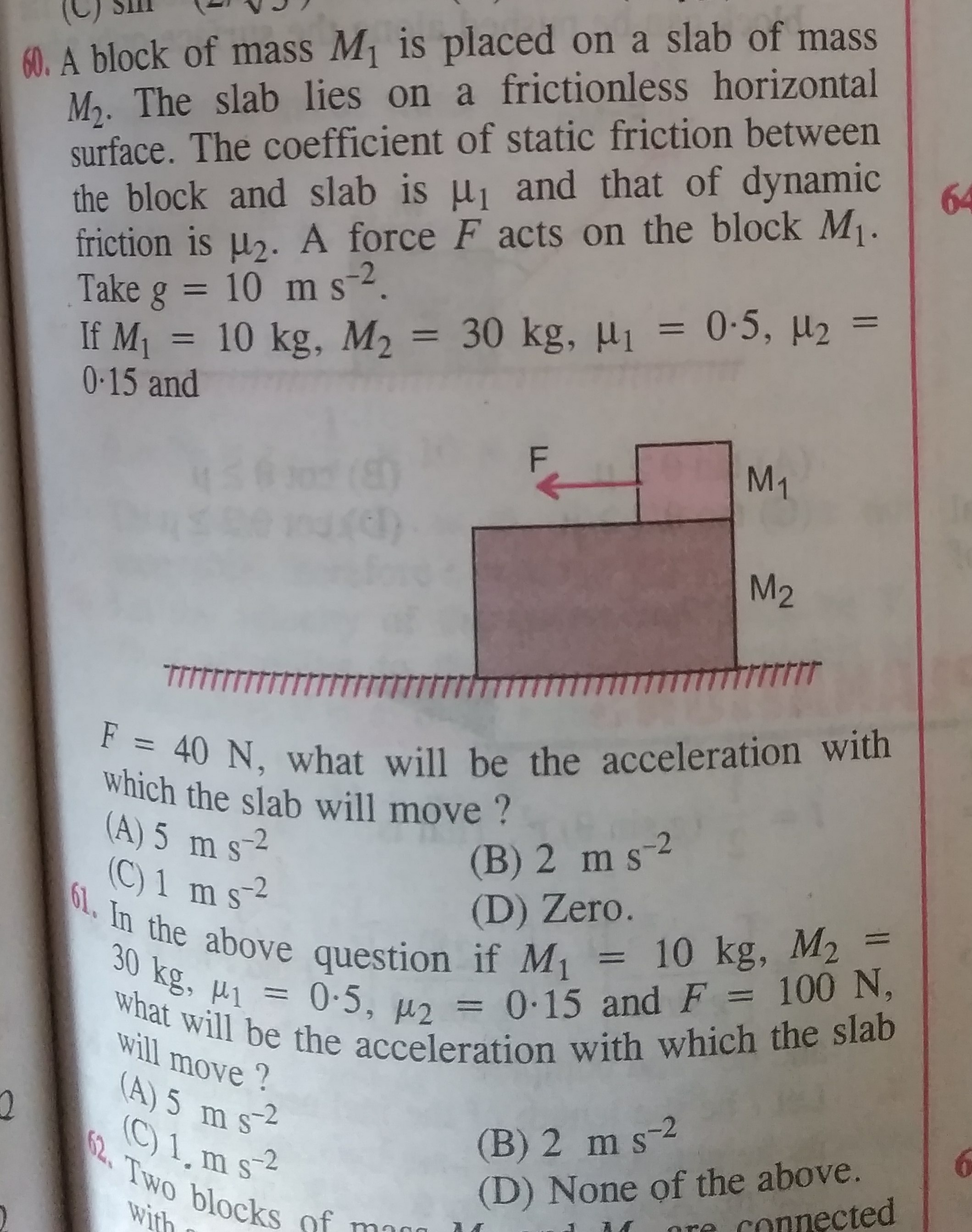Firstly we need to understand why the slab should move,well that is because when you will apply certain amount of force on the block of mass M_1,the frictional force acting at their interface will try to oppose the motion of the block and at the same time it will oppose the inertia of rest of the slab,that means,the slab will move because of the frictional force acting at thier interface.
So,let's see maximum value of static frictional force that can act is mu_1M_1g=0.5*10*10=50N
But applied force is 40N,so frictional force will act by only 40N,such that it will not allow the block to move,rather it will help the slab to move forward taking the block along with it.
So,accleration of the whole system will be a=f/(M_1 +M_2)=40/(10+30)=1 ms^-2
Now,if applied force was 100N,static frictional force would have failed to stop the upper block from moving,in that case,maximum value of frictional force would have decreased to kinetic frictional force,i.e mu_2*M_1g=0.15*10*10= 15N
So,the slab would have been moving forward due to this amount of frictional force acting forward,so its acceleration would have been a=15/30=0.5ms^-2


